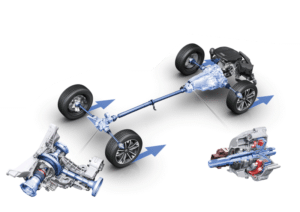
Automobile braking system and accessories in-depth analysis
Among the many systems of a car, the braking system is undoubtedly a crucial component. It not only affects the driving safety
An oxygen sensor, also known as an O2 sensor, is a crucial component in a vehicle’s engine management system. It measures the amount of oxygen in the exhaust gases and provides feedback to the engine control unit (ECU) to optimize the air-fuel ratio. This helps to ensure that the engine operates at peak efficiency, while also reducing emissions.
The primary function of the oxygen sensor is to monitor the level of oxygen in the exhaust gases. This information is used by the ECU to adjust the fuel injection and ignition timing to maintain the ideal air-fuel ratio for combustion. By continuously monitoring the oxygen levels in the exhaust, the oxygen sensor helps the ECU to make real-time adjustments to optimize the engine’s performance.
There are two main types of oxygen sensors: zirconia and titania. Zirconia sensors are the most commonly used type and operate on the principle of an oxygen concentration cell. They generate a voltage signal that is used by the ECU to make adjustments to the fuel delivery system. Titania sensors, on the other hand, are less common and work by using a resistive element to measure the oxygen levels in the exhaust.
When an oxygen sensor begins to fail, it can have a significant impact on the overall performance of the vehicle. Some common signs of a failing oxygen sensor include:
– Poor fuel economy
– Rough idling or stalling
– Engine misfires
– Check engine light illuminated
– Failed emissions test
It is important to address these issues as soon as possible, as a faulty oxygen sensor can lead to increased fuel consumption, reduced engine performance, and increased emissions.
If a vehicle is exhibiting symptoms of a failing oxygen sensor, it is essential to have it diagnosed and replaced by a qualified technician. Typically, oxygen sensors need to be replaced every 50,000 to 100,000 miles, but this can vary depending on the make and model of the vehicle. It is important to use a high-quality, OEM-replacement oxygen sensor to ensure proper function and compatibility with the vehicle’s ECU.
In conclusion, the oxygen sensor plays a critical role in the performance and emissions control of a vehicle. By continuously monitoring the oxygen levels in the exhaust gases, the oxygen sensor helps the ECU to optimize the air-fuel ratio, resulting in improved fuel economy, reduced emissions, and better engine performance. It is important to monitor the condition of the oxygen sensor and to address any issues promptly to ensure the proper function of the vehicle.

Among the many systems of a car, the braking system is undoubtedly a crucial component. It not only affects the driving safety

In the long history of the automobile industry, the transmission system plays a vital role as a bridge connecting the engine and

In the long history of the automobile industry, the engine is the heart of the car, and its performance directly determines the